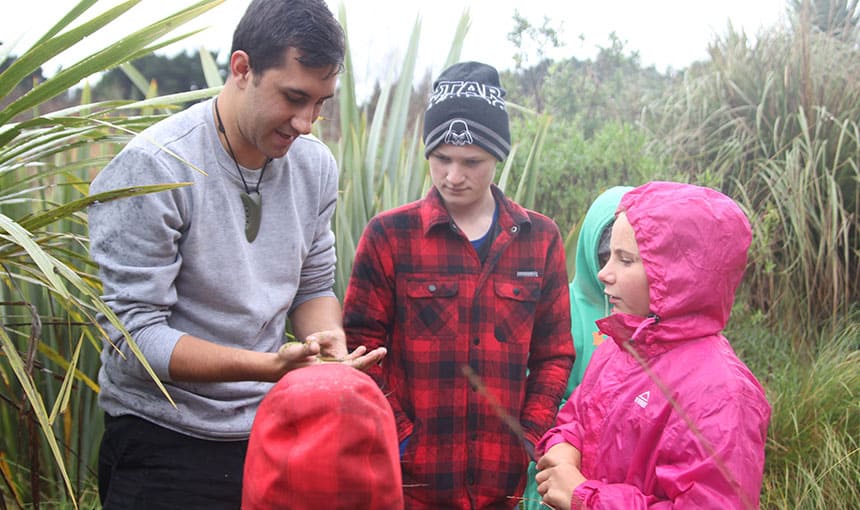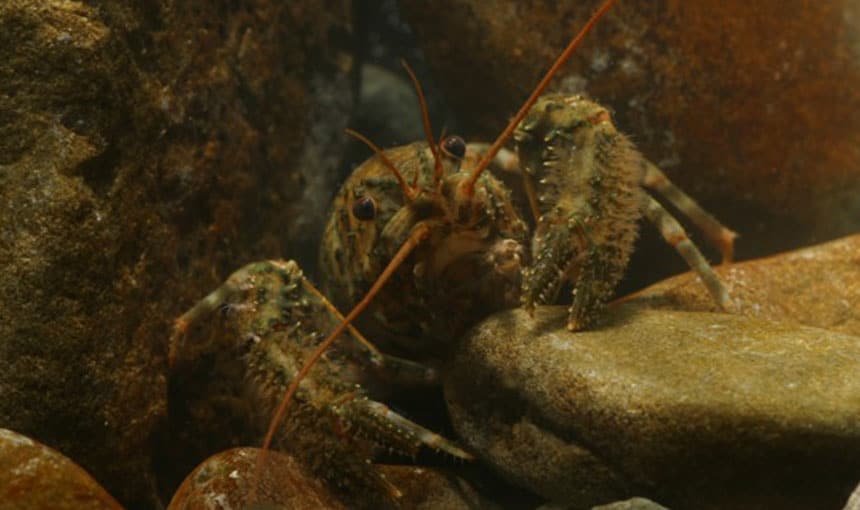Researchers from a BioHeritage collaboration that’s using DNA to help threatened species survive environmental change will co-generate the genome of kekewai/wai kōura/freshwater crayfish so they can better understand the population genetics of the species. A genome is a complete set of an organism’s genetic instructions.
Kekewai are a mahinga kai species found only in Aotearoa. They live in rivers, streams, ponds and lakes along the eastern and southern regions of Te Waipounamu/the South Island.
Nationally, kekewai are recognised as declining. However, many Canterbury populations face a more immediate risk of local extinction due to land-use changes.
University of Canterbury’s Aisling Rayne says they have designed this genome project alongside Canterbury hapū (sub-tribe) Ngāi Tūāhuriri, Genomics Aotearoa (a collaborative research platform for genomics and bioinformatics) and the Institute of Clinical Molecular Biology.
“Although decapod species such as kekewai are of commercial, customary and conservation interest, there are few genomic resources currently available, in part due to their often large and complex genomes,” Aisling says.
The genome will be generated using PacBio long-read sequencing technology, which makes it easier to stitch together large and complex genomes.
The PhD candidate says by analysing the genome of the kekewai, alongside genomic data obtained from populations across the species’ range, they can better understand how adaptable the species is. That is, how likely it is to survive and thrive in a changing environment.
The study aims to guide translocations (moving individuals to bolster existing populations or establish new ones) that increase genetic diversity in small, inbred populations. This could enhance commercial harvests by increasing short-term productivity and long-term resilience of aquaculture populations.
The study could also enhance sustainable customary harvests of kekewai by increasing resilience in at-risk wild populations.
Kaupapa Māori
(Māori methodology)

University of Canterbury MSc student Levi Collier-Robinson says the research team has placed kaupapa Māori at the heart of this project.
“In Te Ao Māori, all genomic data obtained from taonga
species have whakapapa and are taonga in their own right. Genomic data are
therefore best studied using kaupapa Māori principles,” he says.
“We contend it’s the responsibility of researchers working with genomic data
from taonga species to move beyond one-off Māori consultation toward building
meaningful relationships with relevant Māori communities.”
Aisling says their research decisions – including the collection, generation, storage and access of genomic data – are made collectively with mana whenua.
“For example, Makarini Rupene, kaitiaki mahinga kai Ngāi Tūāhuriri (a guardian of mahinga kai for Ngāi Tūāhuriri), identified a culturally significant site for sampling.
“Alongside Makarini, we used tau kōura (traditional fishing methods for kekewai) to collect the kekewai individual that will ultimately become the long-read reference genome.”
The kekewai reference genome is currently being generated by the Institute of Clinical Molecular Biology (IKMB) in Kiel, Germany.
The research team expects the initial results, along with preliminary population genomic data, will be completed before the end of 2019.
